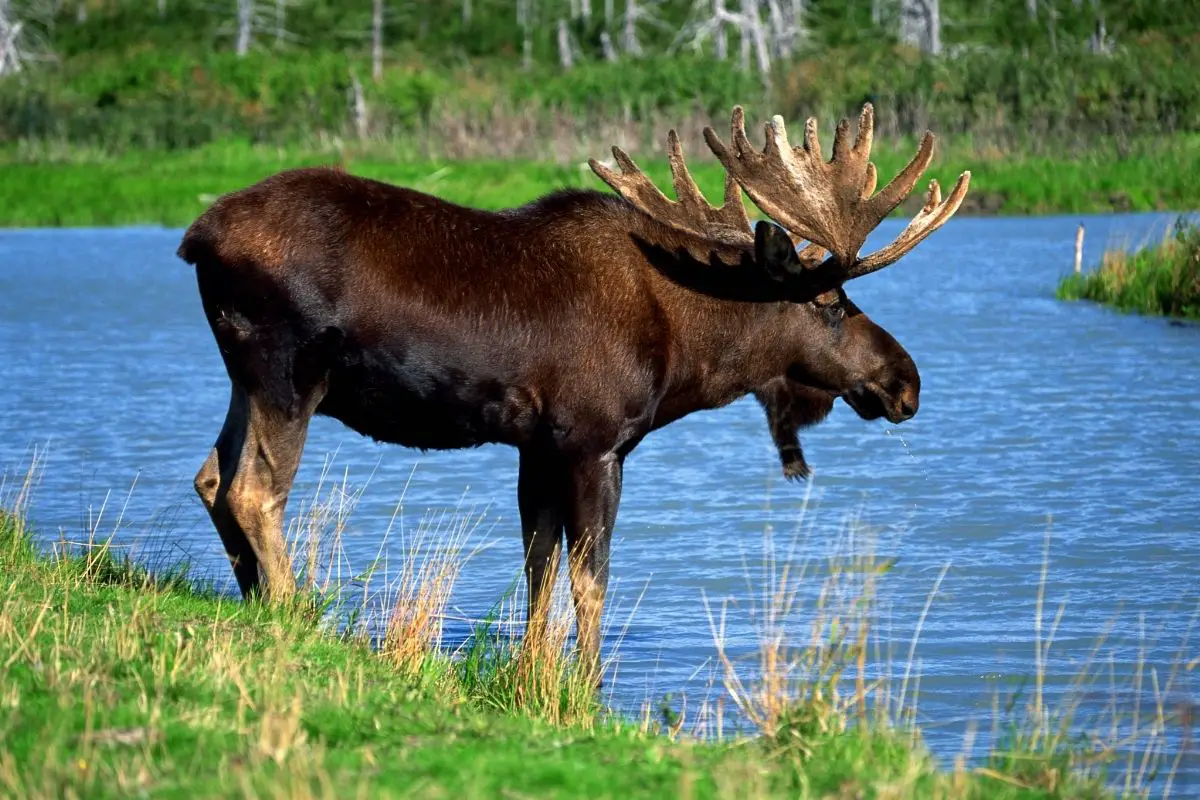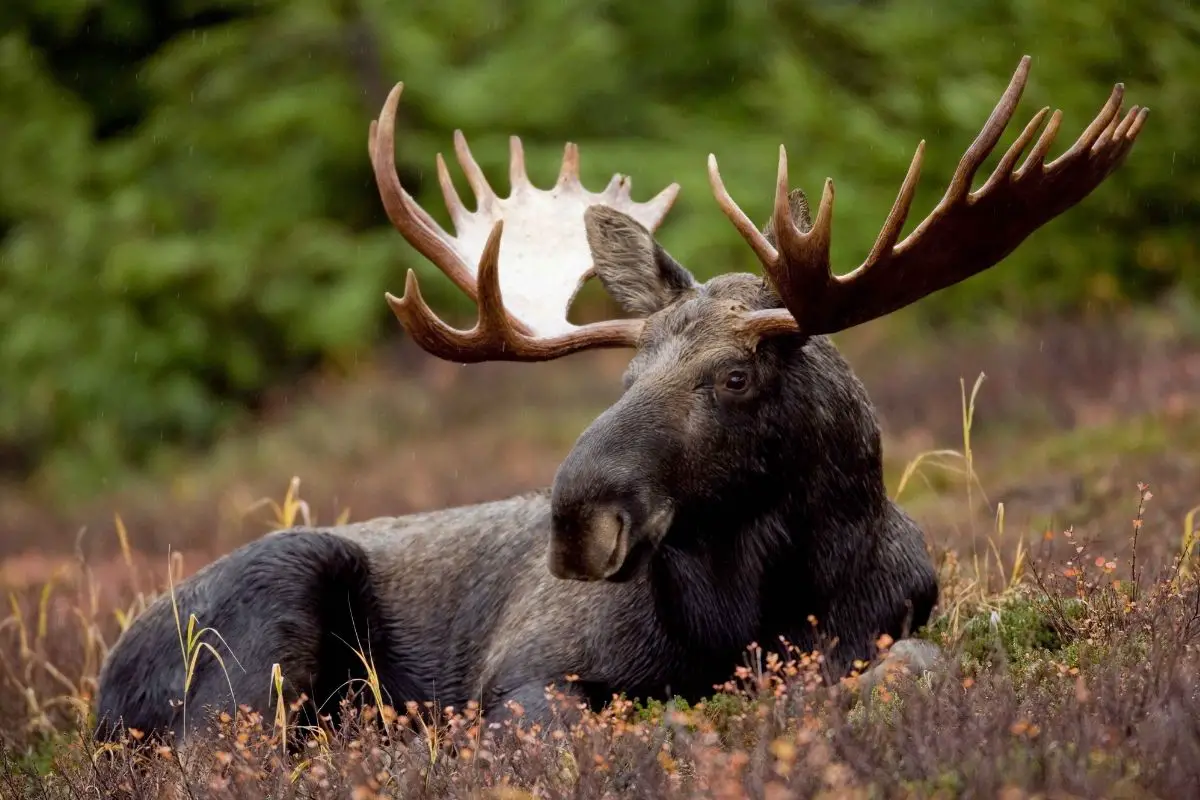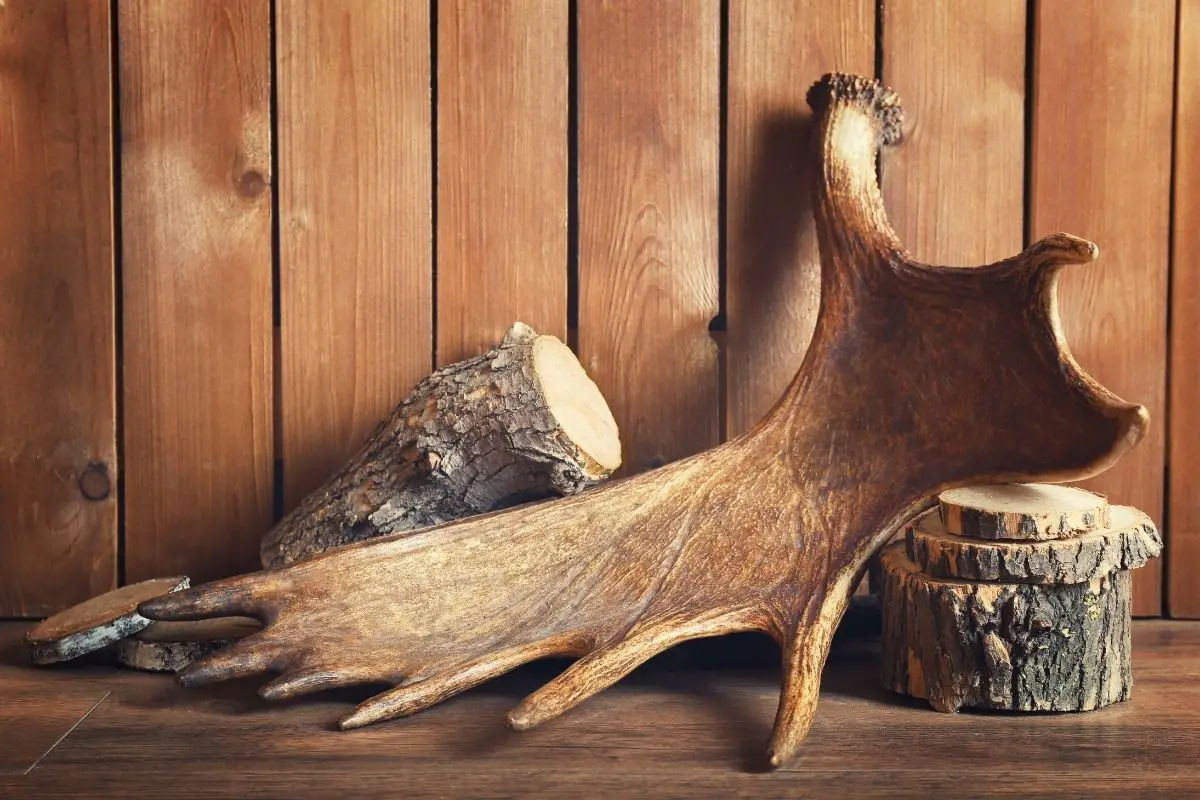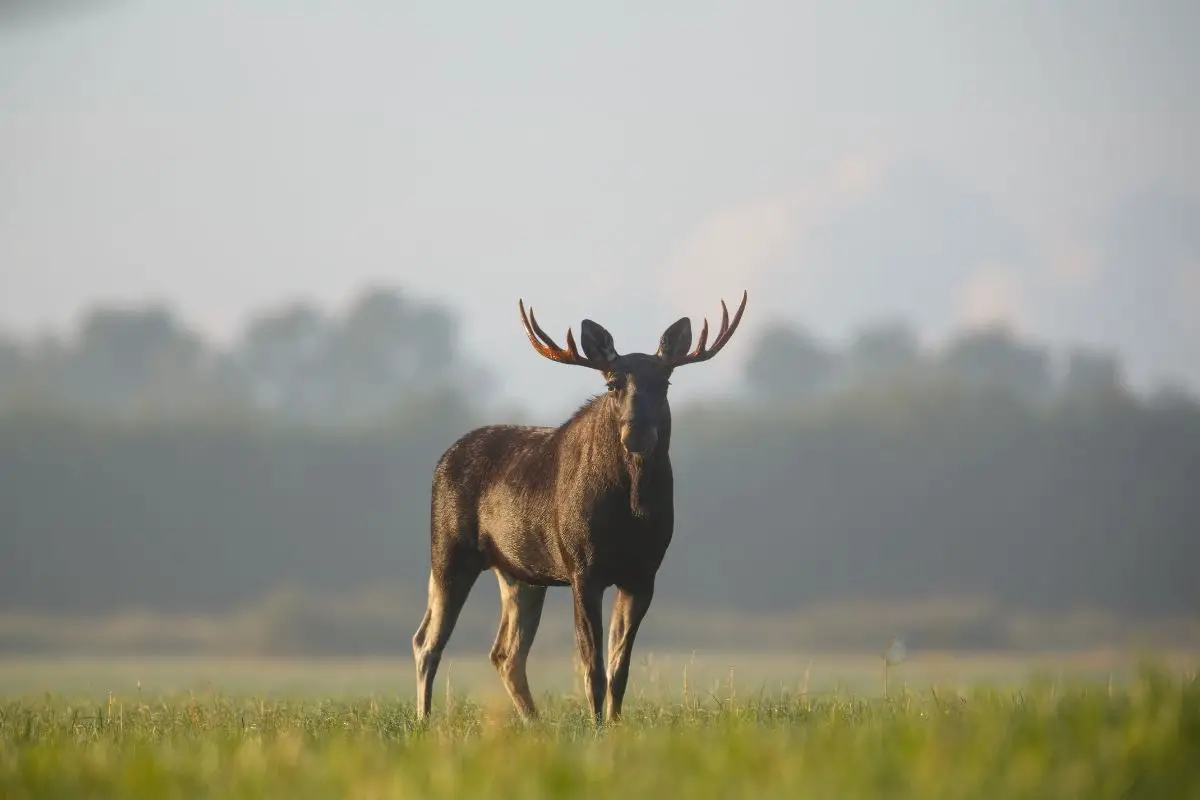
Moose are one of the largest mammals in North America. Adult males can weigh up to 1,650 pounds and stand six to seven feet tall at the shoulders. Like other male members of the deer family, bull moose have antlers that they grow and shed each year.
These antlers can grow to be up to five feet wide and can weigh as much as 30 pounds! Female moose don’t grow them. So why do bull moose grow giant antlers in fall only to shed them in winter? As usual, it’s all about romance!
What are Antlers?

Moose have antlers rather than horns. Like other deer antlers, they grow from bone as an extension of a moose’s skull. But these “skull extensions” are not a permanent attachment). In contrast, cattle, sheep, and goats grow horns they keep forever that are composed of keratin—the same stuff that makes fingernails and hair!
If that sounds weirdly opposite, it gets worse. antler bones grow because of a rough velvet that covers them on the outside, supplying them with blood throughout the growing season. This velvet can produce three-quarters of an inch of new growth per day!
How do Moose Antlers Grow?

Antlers begin to grow when the seasonal shifts in sunlight cue changes in the levels of a male moose’s testosterone, according to Dr. Bronson Strickland of the Mississippi State University. Longer summer days cause the buck’s hormones to activate antler growth. Waning autumn sun ramps up testosterone in the bull’s blood, signaling a stop in antler growth.
The antler velvet that has supplied them with blood throughout the year dries up, and males rub it off on trees and saplings to mark their territory with an oily scent. This marking signals a challenge to other male moose and an invitation to females.
What are Moose Antlers For?
During September and October, it’s mating season! Male moose search for mates by marking territory, by bellowing, and by fighting with one another. In addition to rubbing off their antler velvet to leave a signature scent on trees, bulls make a loud roaring sound to attract females and to warn off other males.
Defense Against Predators
Of course, this sound can also attract predators. One function antlers serve is for defense against other animals that prey on moose. Predators know the heavy shovel-shaped bones with wicked tips make very effective maces!
Dueling Weapons
Male moose prove to females (and to other males) that they are strong and healthy through mating displays. Bulls roar, shake, and show off (much like males across species) in an effort to win the day through intimidation. After all, an actual fight can be dangerous for both parties.
When male moose lock antlers for a head-banging, neck-twisting duel, the result can be devastating: Alaskan scientists have found bull moose frozen to death with antlers locked.
Impressive Headgear

With sexy scents, big antlers, and brash displays, bull moose show females that they are ready to mate. If a female likes his scent and his performance, she may choose him for breeding. Female moose may not have antlers, but they can breed beginning at age two. They can produce one to two calves in summer after carrying them for seven-and-a-half months.
Why do Moose Shed Their Antlers?
Like other animals, moose shed in winter. The heavy antlers are useful for showing off but not so helpful for conserving energy during the coldest months of the year, explains Lee Kantar, moose biologist with the Department of Inland Fisheries and Wildlife in Maine. In the chilly north of the US, Canada, Europe, and Asia, animals dropping weight fast can mean the difference between life and death.
After all, moose need to eat 40-60 pounds of daily browse—plant life they can strip and eat with their large, flat teeth.
What Happens to the Shed Antlers?
Unlike the fur shed by your household pet, a five-foot moose rack doesn’t disappear into the carpet. Instead, the antler bones become a source of calcium for a variety of smaller animals that depend on them for nutrients. So if you find a shed antler, leave it alone: squirrels, mice, porcupines, and even foxes and bears eat moose antlers, which contain not only calcium but also phosphorus and mineral salts.
It’s not quite the story of Thidwick, the big-hearted moose, but it is an amazing example of natural recycling!
